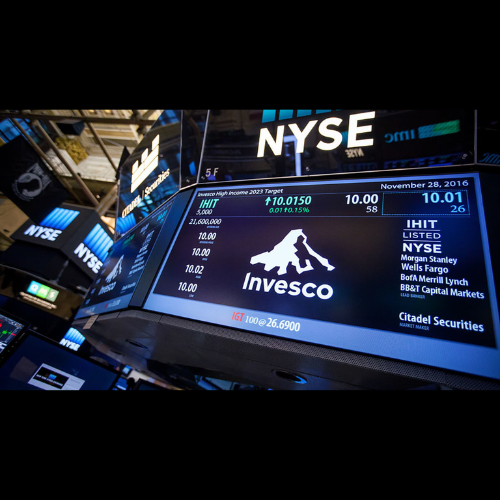In a whirlwind of market fluctuation, Nasdaq (NDAQ) is planning a “special rebalance” of its Nasdaq 100 index (NDX) in an ambitious move to pare down the concentration of the index’s behemoth contributors. This maneuver is akin to reducing the influence of the loudest voices in a choral performance, ensuring all members contribute more equally to the symphony of the market.
In 2023, tech and growth stocks, running with the agility of a caffeinated cheetah, have catapulted the Nasdaq 100 index up by an exhilarating 37.5%. In comparison, the S&P 500 (SPX) was more like a dependable tortoise, gaining a steady 14.8%.
At the heart of the index’s performance are five industry titans – Microsoft (MSFT), Apple (AAPL), Nvidia (NVDA), Amazon.com (AMZN), and Tesla (TSLA). As of the market’s close on Monday, these companies combined make up a staggering 43.8% weight in the index, according to Refinitiv data. But hold onto your shares, folks, because after the rebalance, their collective weight will reduce to 38.5%.
Art Hogan, chief market strategist at B Riley Wealth, expressed concerns that “this handful of names is distorting the health of the overall stock market,” which seems to be the impetus behind the rebalancing maneuver.
The “special rebalance,” according to Cameron Lilja, global head of index product and operations at Nasdaq, serves to maintain compliance with a U.S. Securities and Exchange Commission rule on fund diversification. It’s akin to a surprise party that has occurred only twice before, in 2011 and 1998. The party begins if the combined weight of companies, each tipping the scales at more than 4.5% in the index, breaches the 48% mark. During the celebratory shuffling, it is capped at 40%.
The giants of the index boast some weighty percentages. Microsoft claims the top spot with 12.91%, followed by Apple at 12.47%, Nvidia at 7.04%, Amazon at 6.89%, and Tesla at 4.50%, based on Refinitiv data. A recent rally in Tesla shares has nudged the combined weight over the 48% precipice, sounding the party horns for a rebalance, as per Wells Fargo strategists.
This raises the question, could the S&P 500 follow suit? S&P 500 enforces its weight balance rule when the collective weight of firms each over 4.8% surpasses 50% of the total index. Currently, only Apple and Microsoft exceed the 4.5% benchmark in the S&P 500. However, when considering the most influential firms, including Amazon, Nvidia, and Tesla, they constitute 22.2% of the index’s total market value.
As the tectonic plates of the Nasdaq 100 index shift, a few companies stand to gain increased weight, including Starbucks (SBUX), Mondelez (MDLZ), Booking Holdings (BKNG), Gilead Sciences (GILD), Intuitive Surgical (ISRG), Analog Devices (ADI), and Automatic Data Processing (ADP), according to Wells Fargo index strategists.
Conversely, the influence of Microsoft, Apple, Nvidia, Amazon, Tesla, Meta Platforms, and Alphabet in the index is anticipated to slim down. As Sam Stovall, chief investment strategist at CFRA Research, puts it, “the smaller companies will end up representing a greater percentage of the entire index.”
This reshuffling of the financial deck comes with repercussions. Megacap stocks felt the tremors, with Apple dipping 1% following the news, while Microsoft, Alphabet, and Amazon fell between 0.7% and 2.5%.
These changes will send ripples through the numerous investment funds that track the Nasdaq 100. The funds, including the juggernaut $200 billion Invesco QQQ ETF (QQQ), will need to recalibrate their portfolios and potentially sell shares of companies whose weight in the index is being trimmed. This rebalancing event, set to commence on Friday, July 14, 2023, will start trading rebalanced on Monday, July 17th, 2023, signifying a shift in the market’s rhythm that’s sure to resound across all facets of the financial landscape.
Conclusion
Overall, Nasdaq’s special rebalancing stands as a testament to the ongoing dynamism of the market, acting as a regulatory counterbalance to the otherwise rampant growth of certain sectors. This strategic move, though potentially disruptive in the short term, ultimately seeks to ensure a healthier, more balanced stock market. As investors, analysts, and companies alike brace for the impact, this rebalancing act will offer intriguing insights into market behaviors, investment strategies, and the often intricate dance between the bulls and the bears.
Invesco QQQ ETF More Information
Disclaimer: This article is intended for informational purposes only. It should not be considered financial or investment advice. Always consult with a certified financial professional before making any significant financial decisions.








